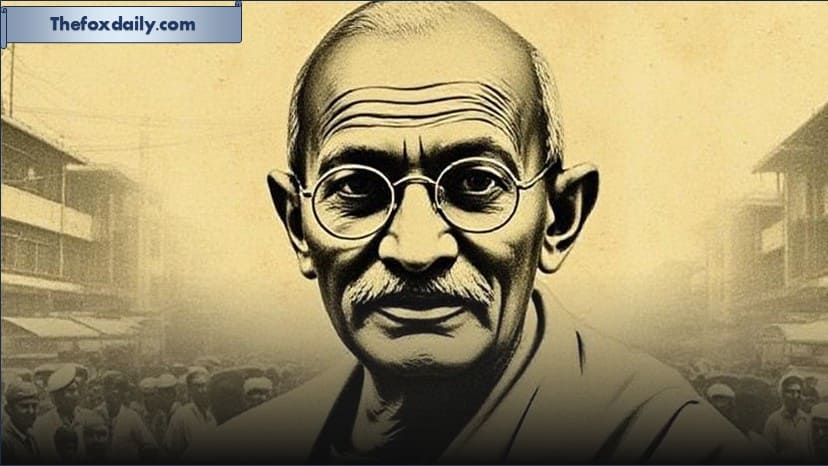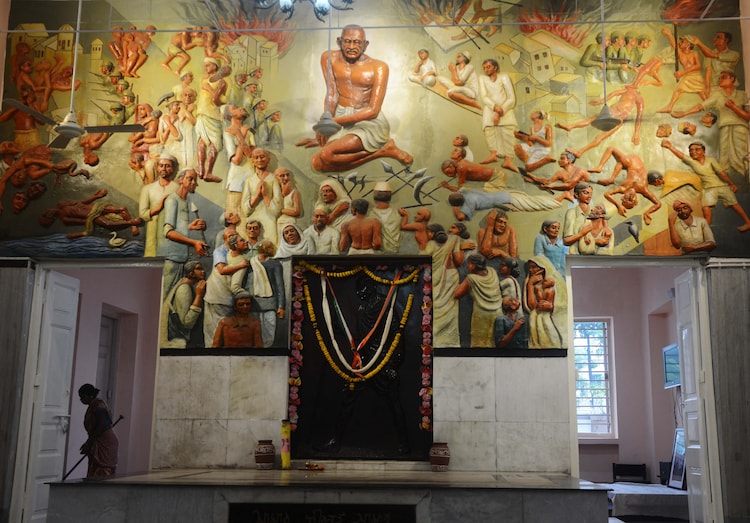
In a society increasingly influenced by the Muslim League, Calcutta was a hive of political struggle and sectarian strife at the start of the 1940s, characterized by shaky alliances.
THE LAHORE SETTLEMENT
The “Lion of Bengal,” Fazlul Huq, was greeted with a roaring reception when he arrived at the Muslim League’s annual conference in Lahore on March 23, 1940. “The lamb must give way when the tiger appears,” Muhammad Ali Jinnah said in a courteous greeting.
That day, Huq, the founder of the Krishak Samaj Party and former president of the League, delivered his pivotal speech by introducing the Lahore Resolution. It called for autonomous and sovereign states in Muslim-majority regions of British India, laying the foundation for what would later be interpreted as the demand for Pakistan.
With the backing of the Hindu Mahasabha, Huq established the Progressive Coalition government in Bengal in December 1941, with Syama Prasad Mookerjee serving as finance minister.
THE REQUIREMENT IN INDIA
The Bengal ministry opposed the Quit India Movement when it was started by the Congress in 1942. Mookerjee wrote to the Governor on July 26, 1942:
How can this movement (Quit India) be stopped in Bengal? We, as responsible Ministers in particular, should be able to inform the public that the freedom for which the Congress launched the movement already belongs to the representatives of the people. Indians must trust the British, not for Britain’s benefit or any potential advantage, but for the preservation of the province’s independence and defense.
The so-called “Huq-Syama” government prioritized upholding order and collaborating with the British wartime administration, upholding “adherence to office” by implementing the Defence of India Rules and resisting calls from the Congress for widespread protest or resignation.
However, the political inconsistencies in Bengal quickly caused the administration to fall, paving the door for the Muslim League to take control.
THE DAY OF DIRECT ACTION
After negotiations with the Indian National Congress and the British government broke down over the question of separate Muslim representation and sovereignty, Jinnah’s Muslim League called for “Direct Action” on August 16, 1946, to demand the establishment of Pakistan.
The action was supposed to be a demonstration of Muslim strength and unity, but in Calcutta (now Kolkata), it swiftly fell into unprecedented communal violence and resulted in a large-scale shutdown and rallies around the city.
THE GREAT KILLINGS IN CALCUTTA
While the Bengal region as a whole was dominated by Muslims, Calcutta was a Hindu-majority metropolis (73% Hindu, 23% Muslim in the 1941 census). The magnitude and velocity of the violence were influenced by these demographics and historical conflicts.
In his book The Great Divide, former Viceroy’s staffer and Sunday Times editor HV Hodson provides a thorough description of the division. In-depth analysis of the August 1946 Calcutta Killings is included in the book.
“The League Ministry in Calcutta, led by Mr. Suhrawardy, who had a far more aggressive stance than Mr. Jinnah, declared August 16th a public holiday. This is a very risky move when communal passions are heightened because Satan would find work for idle hands to do and any group or gathering in a crowded city might provoke hostile reactions from bystanders.”
Hodson records that huge crowds gathered by midday, mainly Muslims from all over Calcutta, many armed with iron bars and bamboo sticks. Tension was increased by speeches made by chief minister Huseyn Shaheed Suhrawardy and Khawaja Nazimuddin. Intercommunal hostility was heightened by some statements that emphasized community grievances and calls for self-defense, despite calls for peace.
“More than anyone could have predicted occurred. About 20,000 people were murdered or gravely injured in Calcutta during the course of the following three days. Whole streets were strewn with corpses-men, women and children of all communities,” writes Hodson.
Moslem crowds had rushed out of their slums before dawn on August 16th, wailing with a fervor that bordered on religion, brandishing shovels, clubs, iron bars, and any other weapon that might crush through a human skull. Any Hindus in their path were brutally beaten to a soggy pulp, and their bodies were dumped in the open gutters of the city.
Subsequently, the Hindu mobs swept out of their neighborhoods in search of helpless Muslims to massacre. Calcutta had never been known to be so barbaric and full of human savagery in its bloody past. Calcutta was under the control of the vultures by the time the carnage was finished. (Midnight Freedom)
Due to their status as a minority in Calcutta, Muslims were both the ones who started the violence and its worst victims. According to Hodson, “the Sikhs in particular, a relatively small community in Calcutta but tough, armed, and largely motorized, were the mechanics and drivers of Bengal as of so many places, sweeping feverishly through the Muslim quarters slaying mercilessly as they went.”
The Statesman said that the city was totally immobilized. The trains remained still. There were no newspapers. Public facilities were interrupted.
“The estimated death toll varied between 4,000 and 10,000.”
An officer’s thorough military report from the Eastern Command, which is preserved in the UK (WO 216/662), evaluated the riots. The escalation that began on the morning of August 16 is detailed in the report:
By late afternoon, things had shifted, and the people on both sides were goondas of the worst kind, rickshaw pullers, teashop wallahs, pan berri (beedi) wallahs, cart pullers, and cart men. These gangs engaged in their most desperate conflicts just after midnight on the 16th and 17th. North Calcutta’s side streets and byways were the scene of the worst kinds of murder and butchery. Round Vivekananda Road/Central Ave., crossing about 50 Hindu Behari rickshaw pullers were caught in a cul-de-sac and butchered. Further up Central Ave., round the temple which stands in the middle, a party of some 30 Mohamedans were killed.”
THE RIOTS AFTERMATH
The chief minister of Bengal, Suhrawardy, came under heavy fire for his involvement in the riots. He was called “the king of the goondas” in the military report, implying that he encouraged violence.
Administrative failure is noted by Hodson, who states: “I am confident that nothing like the state of affairs which occurred would have occurred if all ranks had known that they would be supported to the hilt.” (Page 168 of The Great Divide).
Muslim mobs in Noakhali, East Bengal, attacked Hindus in retaliation for the Calcutta massacres, murdering 5,000 and uprooting thousands more. According to Freedom at Midnight (p. 210), Mahatma Gandhi arrived on November 19, 1946, to intervene and remained until January 1947.
THE CALCUTTA MIRACLE
Calcutta had another round of rioting in August 1947. The so-called “Miracle of Calcutta” began when Mahatma Gandhi crossed this blazing divide.
In order to comfort victims and foster reconciliation, Gandhi traveled across riot-affected regions like Noakhali (East Bengal) and Bihar in 1946–1947.
He originally intended to go back to Noakhali after arriving in Calcutta on August 9, 1947. However, he was asked to stay and stop the violence by local leaders, such as Huseyn Shaheed Suhrawardy, the former Chief Minister of Bengal for the Muslim League who was frequently held responsible for his silence during the 1946 riots.
According to Pyarelal, the Mahatma’s secretary, “Gandhiji landed in Calcutta on August 9th, 1947… He was asked by a Muslim delegation under the leadership of Muhammad Usman to remain in Calcutta in order to defend Muslims. Gandhiji consented, but only if Hindu safety in Noakhali was guaranteed. Suhrawardy told him that he was afraid for Muslims. Gandhiji said: ‘I will stay if we live together and work until every Hindu and Muslim can return safely home.’ Suhrawardy agreed.” (Mahatma Gandhi: The Last Phase, Vol. X).
In a calculated move to represent solidarity in a riot-prone “no-man’s land,” Gandhi moved into Hydari Manzil, a run-down home in the Muslim-majority Beliaghata slum, encircled by Hindu communities, on August 13. Suhrawardy’s appearance was challenged by angry Hindu protesters who threw bricks and yelled, “Go back, Gandhi!” Hyderi Manzil or Gandhi Bhawan in Beleghata, Kolkata (Image: AFP)

“Gandhiji addressed them from the roof: ‘I have come to serve Hindus and Muslims alike,'” Pyarelal writes in reference to Gandhi’s reply. I entrust myself to your care. I will not live to see you go insane again.
Gandhi’s statement calmed the crowd by promising to fast until death if violence broke out. Suhrawardy publicly apologised for the 1946 riots, fostering initial reconciliation. In an effort to promote unity, Gandhi read passages from the Bible, the Quran, and the Gita during his daily ecumenical prayer gatherings at Hydari Manzil.
While Delhi rejoiced on August 15, 1947, Calcutta witnessed a miracle. The violence stopped suddenly. ‘Jai Hind’ was chanted by both Muslim and Hindu crowds as they visited Hydari Manzil. Gandhi and Muslims ate together, and kids sung patriotic tunes. They dubbed it the ‘Miracle of Calcutta.’ Gandhi, however, warned it might not last: ‘This is no miracle; it is the result of moral persuasion, but we must remain vigilant.’” (Freedom at Midnight).
In a city of millions, Gandhi’s weak presence in a dangerous area and his symbolic residence with Suhrawardy deterred would-be riots and fostered goodwill, ultimately saving thousands of lives.
THE SACRIFICE OF MAHATMA
For around two weeks, there was peace, until on August 31, 1947, retaliatory attacks broke out after a Hindu youth was allegedly stabbed by Muslims. There have been reports of bombings and acid attacks, and armed gangs have resumed murders, looting, and arson.
Gandhi declared a death fast until peace was restored on September 1.
According to Pyarelal, “I will only end the fast when Calcutta is at peace again.” I will live to serve if it is restored.
At Hydari Manzil, Gandhi, who was already weak from age and previous fasts, drank only water with lime. Over the course of 73 hours, his health gradually declined.
The response is described by Pyarelal as follows: “His health rapidly declined.” Thousands came, and rioters gave up their weapons, including guns, swords, and bombs. Sikhs, the Muslim League, and the Hindu Mahasabha vowed to “protect minorities at personal cost.” Persuaded by promises, he broke his fast with Suhrawardy orange juice on September 4.
On September 7, 1947, Gandhi departed for Delhi. After that, Calcutta stayed tranquil. Gandhi was referred to by Mountbatten as a “one-man boundary force.” He was dejected, saying, “Freedom has come stained with blood,” even though his fast had saved thousands of lives, demonstrating the effectiveness of nonviolence. (Midnight Freedom).
In contrast to the atrocities in Punjab, Gandhi’s efforts in Calcutta saved thousands of lives. He continued to be depressed by the division, nevertheless, and in January 1948 he fasted once more in Delhi before being assassinated on January 30.
The museum that presently houses Hydari Manzil’s spinning wheel and turned-in weaponry is called Gandhi Bhavan. The world is reminded of moral leadership in times of distress by the “Miracle of Calcutta” and the fast that followed.
For breaking news and live news updates, like us on Facebook or follow us on Twitter and Instagram. Read more on Latest India on thefoxdaily.com.



COMMENTS 0